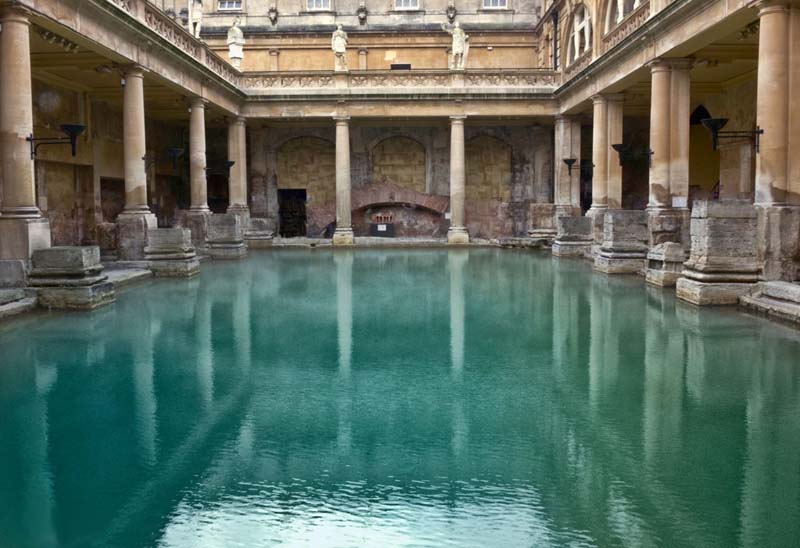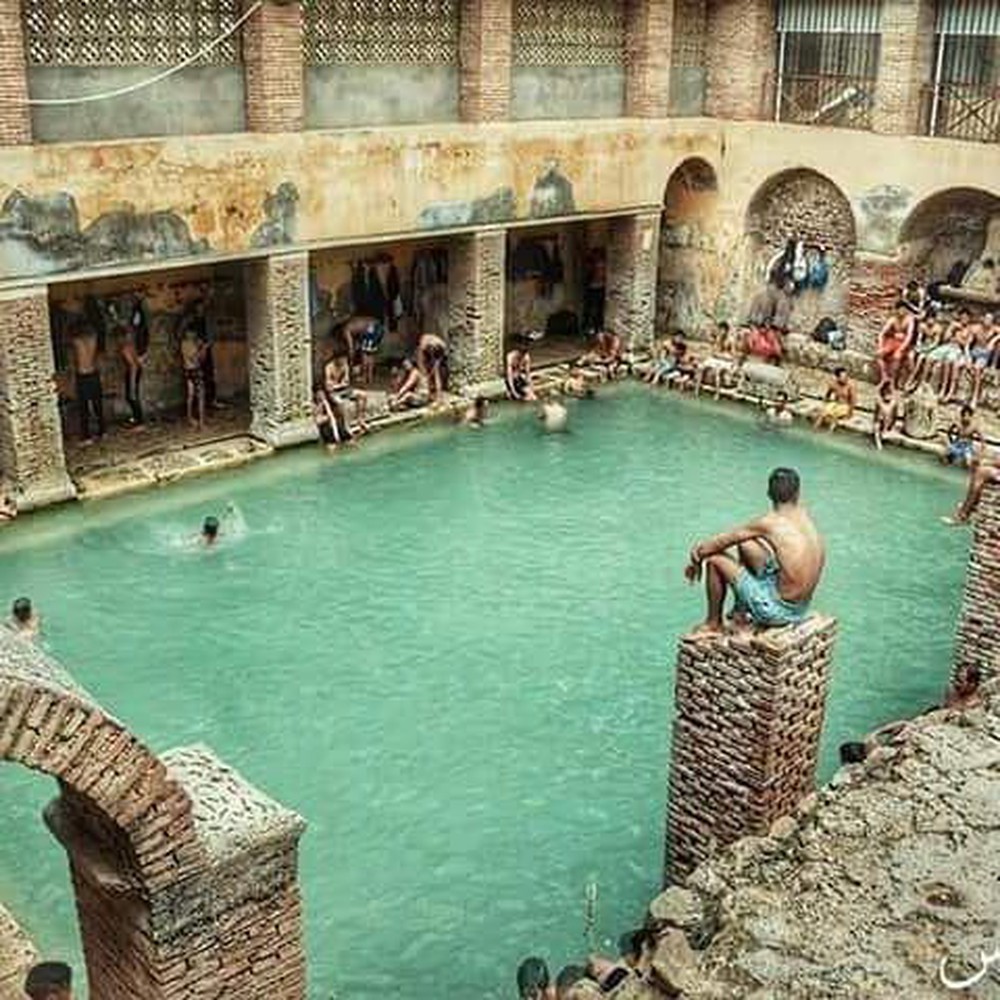History and Design Inspiration

The Roman bathhouse, a cornerstone of Roman society, was more than just a place for hygiene; it was a social hub, a place for relaxation, and a symbol of Roman engineering prowess. The evolution of Roman bathhouses, from humble beginnings to elaborate complexes, is a testament to the Romans’ ingenuity and their appreciation for the art of bathing.
Evolution of Roman Bathhouses
The earliest Roman baths were simple structures, often built near springs or rivers. These early baths consisted of a single room with a pool of water heated by a fire underneath. As the Roman Empire expanded, so did the scale and complexity of bathhouses. By the 1st century AD, elaborate bath complexes had emerged, featuring a series of rooms with different temperatures and functions.
Types of Roman Baths
Roman baths typically included three main rooms: the frigidarium, the tepidarium, and the caldarium.
- The frigidarium was the coldest room, and it was used for cooling off after a hot bath. It often featured a large pool of cold water.
- The tepidarium was the warm room, with a temperature of about 30°C (86°F). It was used for relaxing and preparing the body for the hot bath.
- The caldarium was the hottest room, with a temperature of about 45°C (113°F). It was used for bathing and sweating, and it often featured a large pool of hot water and a steam room.
Materials Used in Roman Bath Construction
Roman bathhouses were constructed using a variety of materials, including:
- Marble: Marble was used extensively in Roman bathhouses, particularly for flooring, walls, and decorative elements. It was a durable and aesthetically pleasing material that could be polished to a high sheen.
- Mosaic: Mosaics were another popular decorative element in Roman bathhouses. They were created by arranging small pieces of colored glass, stone, or ceramic to create intricate patterns and designs.
- Brick: Brick was a common building material in Roman architecture, and it was used extensively in bathhouse construction. Brick was durable and relatively inexpensive, making it an ideal material for building walls and vaults.
Natural Light and Ventilation in Roman Bath Design
Roman bath architects were masters of using natural light and ventilation to create comfortable and functional spaces. Bathhouses were often designed with large windows to allow natural light to flood the interior. Ventilation was also essential, as it helped to remove steam and moisture from the air.
“The Romans were particularly skilled at using natural light and ventilation in their bathhouses. They understood that these elements were essential for creating a comfortable and healthy environment.”
Key Features of a Roman Bath Style Bathroom

The Roman bath was more than just a place to cleanse; it was a social and cultural hub. The architecture and design of Roman baths aimed to create a relaxing and rejuvenating experience, which is what we aim to recreate in a modern bathroom. The key features of a Roman bath style bathroom are designed to evoke this sense of tranquility and luxury.
Essential Elements of a Roman Bath Style Bathroom
The essential elements of a Roman bath style bathroom include:
| Feature | Description | Example | Image |
|---|---|---|---|
| Tiled Floor | Roman baths often featured intricate mosaic floors made from marble, stone, or terracotta. These floors were not only aesthetically pleasing but also durable and easy to clean. | A modern bathroom can incorporate a tiled floor with a geometric pattern or a mosaic design inspired by Roman bath floors. | [Image of a tiled bathroom floor with a geometric pattern or a mosaic design] |
| Marble or Stone Surfaces | Marble and stone were widely used in Roman baths, adding a touch of elegance and sophistication. These materials are also durable and resistant to moisture, making them ideal for bathroom use. | Marble countertops, shower walls, or even a marble bathtub can create a luxurious Roman bath feel. | [Image of a bathroom with marble countertops, shower walls, or a marble bathtub] |
| A Central Pool or Plunge Pool | The central feature of a Roman bath was a large pool of water for bathing. In a modern bathroom, this could be represented by a large bathtub, a walk-in shower with a rain shower head, or even a plunge pool. | A large, freestanding bathtub with a clawfoot design or a walk-in shower with a rain shower head can mimic the experience of a Roman bath. | [Image of a large, freestanding bathtub with a clawfoot design or a walk-in shower with a rain shower head] |
| A Steam Room or Sauna | Roman baths often included a steam room or sauna, known as a sudatorium. This room was used for sweating and purifying the body. | A modern bathroom can include a steam shower or a small sauna to recreate the experience of a Roman bath. | [Image of a steam shower or a small sauna] |
| Natural Light | Roman baths were often designed to maximize natural light. Large windows and skylights allowed sunlight to flood the bathing areas. | A modern bathroom can incorporate large windows, skylights, or even a glass roof to bring in natural light. | [Image of a bathroom with large windows, skylights, or a glass roof] |
| Decorative Elements | Roman baths often featured decorative elements such as columns, arches, and sculptures. These elements added a sense of grandeur and sophistication to the space. | Modern bathrooms can incorporate similar decorative elements, such as columns, arches, or decorative moldings. | [Image of a bathroom with columns, arches, or decorative moldings] |
Modern Applications of Roman Bath Style: Roman Bath Style Bathroom

The timeless elegance and practicality of Roman bath design continue to inspire modern bathroom design. Modern interpretations of this ancient style blend the functionality of Roman baths with contemporary aesthetics, creating luxurious and relaxing spaces that evoke a sense of history and tranquility.
Designing a Modern Roman Bath Style Bathroom
A modern Roman bath style bathroom draws inspiration from the principles of ancient Roman bathing, while incorporating contemporary design elements and materials. The following considerations are crucial in designing such a bathroom:
Space Layout and Functionality
- Open and Spacious Layout: Roman baths were designed to be grand and communal spaces. Modern interpretations often feature open layouts with minimal partitions, creating a sense of spaciousness and grandeur.
- Separate Zones: Similar to Roman baths, modern versions often feature distinct zones for bathing, relaxation, and dressing. These zones can be subtly separated using materials, levels, or lighting.
- Flexibility and Multifunctionality: Modern bathrooms often incorporate flexible features like built-in seating, shelving, and storage, allowing for a variety of uses and accommodating different needs.
Material Choices and Finishes
- Natural Stone: Roman baths were known for their use of natural stone like marble, travertine, and granite. These materials add a touch of luxury and timelessness to modern bathrooms.
- Warm Tones: Earthy tones like beige, brown, and terracotta are common in Roman bath style bathrooms, creating a warm and inviting atmosphere.
- Metallic Accents: Bronze, copper, and brass accents are often incorporated to add a touch of richness and historical authenticity.
- Mosaics: Intricate mosaic patterns were a defining feature of Roman baths. Modern bathrooms can incorporate mosaic tiles on floors, walls, or as decorative accents.
Lighting and Ventilation
- Natural Light: Roman baths were often designed to maximize natural light. Modern bathrooms can incorporate large windows or skylights to create a bright and airy space.
- Soft, Ambient Lighting: Soft, ambient lighting can create a relaxing atmosphere, mimicking the candlelight used in Roman baths.
- Effective Ventilation: Proper ventilation is essential to prevent moisture buildup and ensure a comfortable and healthy bathroom environment.
Incorporating Traditional Roman Bath Features
- Freestanding Bathtubs: Roman baths featured large, freestanding tubs, often made of stone. Modern interpretations often use freestanding tubs with sleek, minimalist designs.
- Water Features: Roman baths incorporated fountains and pools. Modern bathrooms can incorporate water features like waterfalls, rain showers, or even small fountains to create a sense of tranquility.
- Steam Rooms or Saunas: Steam rooms and saunas were integral parts of Roman baths. Modern bathrooms can include these features to enhance relaxation and well-being.
Examples of Successful Modern Roman Bath Style Bathrooms
- The Roman Bath at The Dorchester Hotel in London: This luxurious bathroom features a large, freestanding marble bathtub, mosaic floors, and a steam room, creating a truly immersive Roman bath experience.
- The Spa at The Ritz-Carlton, Half Moon Bay: This spa features a Roman-inspired relaxation pool with natural stone walls and mosaic accents, offering a serene and tranquil environment.
- Private Residences: Many contemporary homes incorporate Roman bath style elements, such as freestanding tubs, natural stone, and mosaic details, to create luxurious and spa-like bathrooms.
Advantages and Challenges of Creating a Roman Bath Style Bathroom
Advantages:
- Luxurious and Relaxing Atmosphere: Roman bath style bathrooms create a sense of opulence and tranquility, making them perfect for relaxation and rejuvenation.
- Timeless Elegance: The classic design elements of Roman baths are timeless and never go out of style.
- Sense of History and Culture: Incorporating Roman bath elements adds a touch of history and culture to a modern bathroom.
Challenges:
- Space Requirements: Creating a true Roman bath style bathroom often requires significant space.
- Material Costs: Natural stone and other high-quality materials can be expensive.
- Design Complexity: Designing and implementing a Roman bath style bathroom can be complex, requiring skilled professionals.